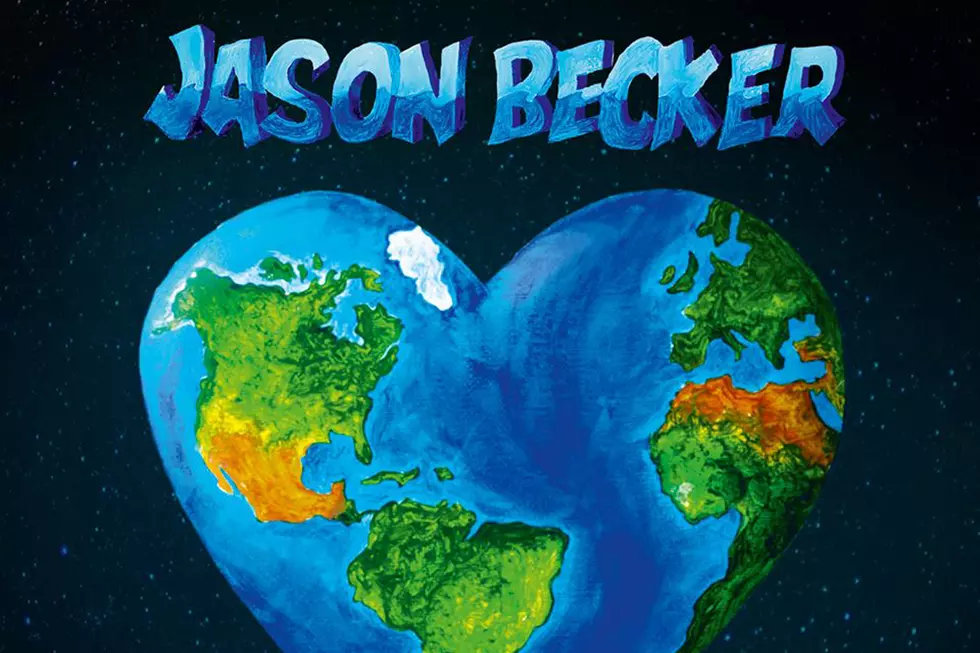
Steve Vai: Eddie Van Halen’s Parts Were ‘Perfectly Orchestrated': Exclusive Interview
By the time Steve Vai crossed career paths with David Lee Roth, he'd already had a busy career that included working in his teens with Frank Zappa.
Still, Vai found new challenges taking on the music written by Eddie Van Halen, which he notes was "perfectly orchestrated."
Now many albums removed from the experience, Vai continues to find new ways to challenge himself. Inviolate, his latest record, arrives Jan. 28 digitally and will be released on vinyl in March.
"It's very 'Vai,' whatever that means," he says, going on to further term it as "just very honest music."
Vai is the first to admit his work can get pretty complex, which is why he wanted to keep things simple this time around. "A lot of my records, they're long and there's a lot of concepts and playing around with stories. This one has none of that. This is nine pretty dense all-instrumental compositions that I wanted to capture and record so I could get out there and play them live for people.
He'll hit the road later this year in support of the album, armed with a new multi-necked guitar "christened the Hydra" that would make Cheap Trick's Rick Nielsen jealous. We spoke with Vai via Zoom recently in advance of the album's release.
What was it like working up the Van Halen songs you were playing on tour with David Lee Roth? What sticks with you from that whole experience?
Well, just how great they were. As a guitar player, playing Edward’s parts, it’s a joy because they’re perfectly orchestrated. They fall on your hands beautifully. They’re just engineered so beautifully. Now, you can learn how to play them, but it’s not going to sound like Edward. You know, it will always sound like you. They sounded like me playing Edward’s parts. I did my best to pay respect to them, because they’re great fun to play. It was nice. It was such an incredible opportunity and a joy to play those songs in front of 25,000 people a night.
Watch Steve Vai Perform Van Halen's 'Panama' With David Lee Roth
What was the most challenging one?
[Vai pauses.] The challenging aspect for me in playing those tracks was also the educational aspect, and that was how Edward quantified his parts. They had no sharp edges – this is hard to explain, but they’re well rounded edges. His ability to sync to his brother was magical. Finding that groove [was interesting] because his brother didn’t play straight like a drum machine, but the way that they locked was remarkable. That’s something that you can’t really learn by learning where to put your fingers. That’s an internal thing. You’d have to be playing with Alex [Van Halen] to understand how you would navigate those parts the way Edward did. I played them with Gregg Bissonette, who is a fabulous drummer. He’s a little more straight ahead in the groove. It’s like, Alex flows more; Gregg is locked. So I was playing to Gregg, so that was a bit different.
For your new album, you have a new guitar called the Hydra that's unbelievable. I'd love to hear more about the experience of designing it.
I’ve always [liked] multi-neck guitars. In the past, I played that big red heart guitar and I’ve had triple necks and these kinds of things. I’ve always tried at some point to incorporate the other necks into a performance. But with the Hydra, I wanted to really create something where everything is integrated in one performance. It originally started about five years ago. I was watching Mad Max: Fury Road where they’re flying through the desert and there’s this guy strapped to the front of a truck. He’s playing this wild guitar. I thought that was really cool, but it’s fake. I’m going to make it real and really do something wild.
I came up with the idea of creating this guitar that had a 12-string neck that was half fretless and a seven-string and a three-quarter-inch bass neck that was half fretless [with] harp strings. I was into the steampunk motifs at the time. I gathered a bunch of materials and sent them to Ibanez. The designers and engineers in Japan flipped out. They just went above and beyond. I couldn’t believe it, because they’re usually very conservative. They sent me back a rendering of a Hydra and I couldn’t believe it. I was like, “You’re going to build this?” And they’re like, “Yes we are, Mr. Steve!” They started to build it and took like three and a half years. They actually even made a prototype. Finally I got the guitar and I couldn’t believe it. When I opened the case, it was like, “What?” It was awesome and it was intimidating. Because I knew I had to write this piece of music with it. I put it up on the stand and it sat in the studio for about a year.
You mentioned that it’s heavy. As the years have passed, have these kinds of guitars gotten any lighter than they used to be?
Unfortunately, the older you get the heavier things get. [Laughs.] Luckily, I have a brilliant guitar tech, Thomas Nordegg, and he devised this strap that puts all of the weight of the Hydra on my hips. It’s really great. But the thing is so heavy. And it doesn’t move like a guitar, so when you’re walking with it – like, if you take a step to the right, the Hydra thinks, “Oh, you want to go that way? Okay, well let me take you all of the way to New Jersey!” [Laughs.] It just keeps taking you, so your equilibrium is whacked out – but that’s fine, I feel very confident. I know that I can totally perform it, given the time to work it out. I obviously want to be able to stand up and play it. I haven’t gotten quite that far yet, but on a stand, it’s much easier, obviously.
Rick Nielsen of Cheap Trick is famous for his similarly crazy guitars. How much was that an inspiration also for the Hydra?
I have a quirky imagination. That’s where it takes root. I think that’s where it takes root in Rick. You know, we love him. He’s got a great sense of humor. He’s a badass player and a historical songwriter. He can do whatever he wants. I’m glad he did that. But it definitely came from his [mind]. I mean, look at the paint job on it. Look at what he’s wearing when he’s playing it! It’s so him. It’s beautiful.
The Hydra came about the same way. There’s nothing unique about having a multi-neck guitar. It’s what you do with it and how you present it. It takes a village. Guys like me and Rick can come up with the idea, but you have to have a team of people that find it interesting enough for them to build it. You know, because I can’t build it. It would remain a rumor in my own room if I had to build it – a legend in my own mind! But yeah, it’s fun too. When you have people like that surrounding you that are interested to build whatever you have in mind. That’s really nice.
"Knappsack" is one of the songs that you put out prior to the release of this album. Kids start posting videos of themselves playing your song. Are you fascinated by how quickly the songs come back to you in that way these days?
I didn’t think I was going to see somebody trying to play “Knappsack.” Exactly as you mentioned, days after I released it, there was this one kid, he had made two videos. The first part and the second part. I couldn’t believe it, this kid was nailing it. It was fascinating. Just recently, I released the song “Little Pretty.” It’s a very dense piece of music. It has some real ethereal qualities. The solo is very melodic and relatively death defying because of the chord changes that exist underneath it. I’ve already come across four videos of kids who have tried to play the song or are playing it, or are making tab or commenting – already. I wrote to one of them and said, “How did you do this so quick?” It’s nice to see that. It means that there are people out that find it of interest and that’s great.
Watch Steve Vai Perform ‘Knappsack’ With One Hand
You're doing really interesting things with Alien Guitar Secrets and also, your Patreon, which opens up a whole different creative exchange. What are you getting out of it? In one sense, you get to workshop your material.
Yeah. You know, for my whole life, I’ve always loved the idea of educating and teaching. I always felt that by the time I check out, I want to have some kind of platform that offers everything that I know. All of the experience that I believe I’ve had that could be helpful for people who are interested in having a career in a similar field. I’ve got a wealth of [things to share]. I’ve been an independent artist my whole life; I know this business. There’s so many things that I’ve discovered – and music, in general. I wanted to create a place where I could just dump all of this stuff from my life.
Push finally came to shove during the lockdown. Before I started working on Inviolate, I carved out about four or five months and I created a ton of content. I didn’t know what platform to put it on, because I’m not really aware of everything that’s available, and everything’s constantly changing. So I sent my peeps out to find the best platform and they came back and they said, “We think the Patreon platform is going to be great, because it has folders and you can create categories.”
If you go to my Patreon, there’s all of these categories. There’s stuff like "Lift the Riff," where I just show people a riff, or "Tall Tales," where I just tell stories. It’s hilarious shit, too. That worked out great. They said, “You’ve got to charge something, you know.” That was the tough part. I said, “Okay, what’s the least? Like five bucks a month or something.” Okay. But really, the value, if you’re interested in recording guitar, there’s a whole episode I did on delay, on miking, there’s a great wealth of information when it comes to engineering. I’ve engineered all of my records. So the Patreon is really nice – and also, I can go live and talk to those folks and they get a little something special.
Top 100 Classic Rock Artists
Think You Know Van Halen?




